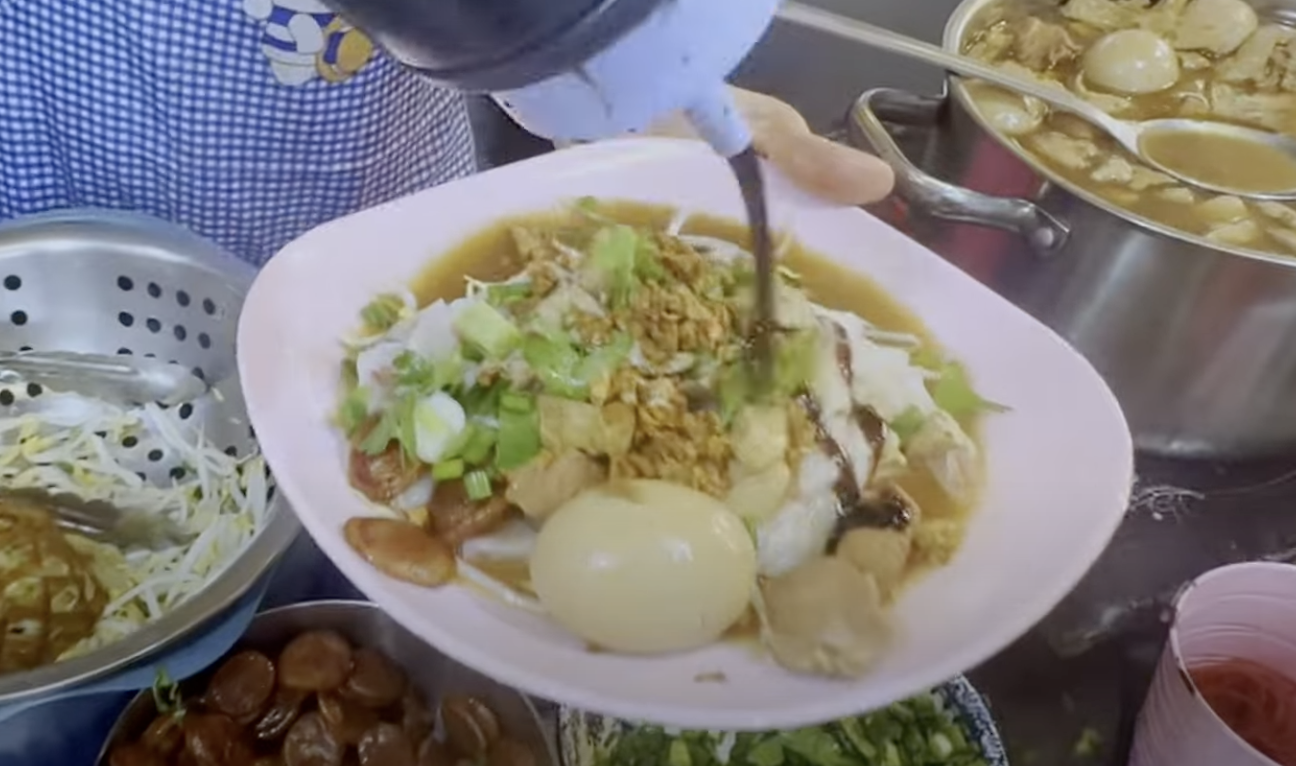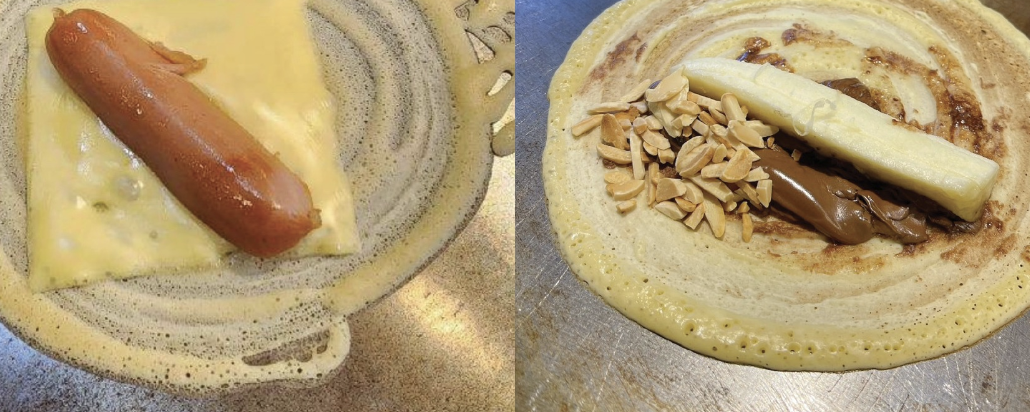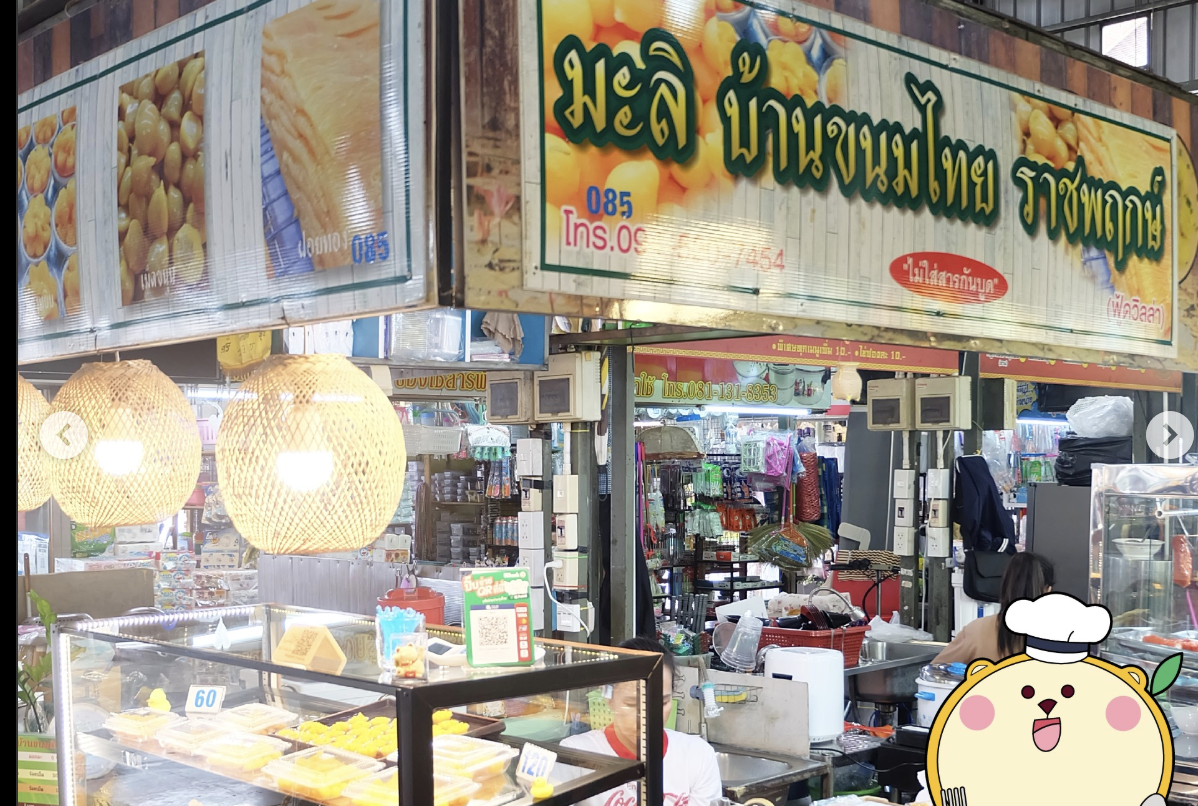
A Culinary Oasis in Bangkok: Food Villa Ratchaphruek
Bangkok’s dining scene is a battlefield of flavors—street food stalls, neon-lit night markets, and air-conditioned gourmet hubs all vie for attention. But tucked away near Ratchaphruek’s bustling streets lies a hidden gem where tradition and innovation collide: Food Villa Ratchaphruek.
This isn’t just another food court. It’s a culinary playground where smoky moo ping (grilled pork skewers) sizzle beside artisanal Thai-fusion desserts, and every stall tells a story. Think: grandma’s recipes served with Instagram-worthy flair.
In this guide, I’ll unpack:
🔥 Must-try stalls (including a Koay Teow Lor so good)
🔥 Underrated bites most visitors overlook
🔥 Pro tips for navigating like a local (hint: skip the lunch rush)
Food Villa Market is a local open-air market open daily features outstanding standard of fresh market
The food court is situated on the west side of Bangkok
How to get there
Directions to Food Villa Ratchaphruek (ตลิ่งชัน) with public transportation
The market is situated about 7 km from Bang Wa BTS Station, so visitors may need to take additional transportation to get there.
The following transit lines have routes that pass near Food Villa Ratchaphruek
Bus: 2-27 (210), 2-28, 208, 4-47 (89), 4-57R.
Train: 252, 251, 254, 255, 257.
Metro: BLUE.
Food Villa Ratchaphruek is now one of the largest in Bangkok
Food Villa Ratchaphruek Fresh Vegetable Stall
Stop #1: Steam Popiah
Wrapped in a soft, translucent rice paper, each roll bursts with crunchy shredded jicama, carrots, and crispy fried shallots, balanced by savory fillings like shrimp, ground pork, or tofu. Fresh herbs like Thai basil and cilantro add brightness, while a drizzle of sweet-spicy tamarind-peanut or hoisin sauce ties it all together. Unlike its fried counterpart, the steamed version is light yet satisfying—perfect for Thailand’s tropical heat.
What makes Thai steam popiah truly special is its contrast of flavors and the artistry behind its assembly. Vendors often prepare it to order, ensuring the rice paper stays tender and the fillings stay crisp. A squeeze of lime adds a tangy kick, enhancing the savory, sweet, and nutty notes. Whether enjoyed as a street snack or a light meal, each bite delivers a satisfying crunch, followed by a burst of fresh, vibrant flavors—a must-try for anyone exploring Thailand’s street food scene.**
The Steam Popiah stall that you cannot miss
Super fresh ingredient
Hand wrapped each
Super yummy
Stop #2. Koay Teow Lor
Thailand’s koay teow lo (ก๋วยเตี๋ยวล้อ) is a rich, aromatic braised noodle soup that delivers deep, comforting flavors in every spoonful. This lesser-known gem features tender rice noodles steeped in a fragrant, dark broth—slow-cooked with spices like star anise, cinnamon, and five-spice powder, along with succulent cuts of pork, offal, or meatballs. The broth is slightly sweet, savory, and infused with herbal notes, often garnished with crispy fried garlic, fresh cilantro, and a touch of chili for heat. Hearty yet balanced, koay teow lo is a warming, umami-packed dish that showcases Thailand’s love for bold, slow-simmered soups—perfect for rainy days or when you crave something deeply satisfying.
This dish is unbelievable
The stall at Food Villa Ratchaphruek for Koay Teow Lor
Super mount Watering la
Fresh ingredient
Stop #3. Khanom Tokio ZONE A018
Khanom Tokyo, a popular Thai street food, is a thin, pancake-like crepe that is typically filled with either sweet or savory ingredients. While its name suggests a Japanese origin, it's actually a Thai adaptation of the Japanese dorayaki, a pancake sandwich filled with red bean paste. Thai versions often feature custard cream, sausage, or quail eggs as fillings.
Appearance:
It's a thin, flat pancake, often rolled up, and is similar to a crepe.
Fillings:
Sweet fillings include various custards (like vanilla or pandan), while savory options might include sausages, quail eggs, or ground pork. Origin:
While the name suggests Japanese influence, it's believed to have originated in Thailand, possibly inspired by dorayaki at the Thai-Daimaru department store in Bangkok.
The stall with an outstanding sign
The dessert Khanom Tokio is super popular in Thailand
Khanom Tokio had its origin from Japan
Khanom Tokio is flaky and easy to eat
Stop #4. Tong Yot ทองหยอด Zone E085
Thong yot (Thai: ทองหยอด, pronounced [tʰɔ̄ːŋ jɔ̀ːt]), also known as "gold egg-yolks drops", is a Thai dessert and one of the nine auspicious traditional Thai desserts. Thong yot originated in Aveiro District, Portugal. Thong yot was adapted from ovos moles de aveiro, a Portuguese dessert, by Maria Guyomar de Pinha, who was appointed as a cook in the palace in the period of King Narai of Ayutthaya. Thong yot is made from egg yolks, flour and sugar.
Thong yot is one of the nine auspicious traditional Thai desserts which are used on special occasions such as wedding ceremonies. These nine auspicious traditional Thai desserts are one of Thailand's culinary treasures. Thong yot is the same type of dessert as thong yip, thong ek and foi thong. Thong yot represents blessing for wealth from one person to another person. Thong yot itself represents gold that is given to another.
The Stall is located at E085
Thong Yot is one of the nine auspicious traditional Thai desserts.
It's quite addictive
It is sold all over Thailand
Stop #5 Kafei ZONE E016-017
Kafei at ZONE E016-017 is a charming old-fashioned coffee shop that never disappoints—delicious no matter when you visit! 😁 This cozy spot offers a wide variety of must-try drinks, including their strong and top-notch iced coffee ☕️☝️, a mellow and fragrant iced tea 👍, and their signature Oleang (Thai iced coffee) with fresh milk or Oleang Yok Lo—a definite must-try 👈. Beyond beverages, they also serve freshly made snacks like Saku Pak Mo & Khao Kriap Pak Mo, adding even more flavor to your coffee break. Whether you're craving a bold caffeine kick or a sweet, creamy treat, Cafe ZONE has something for everyone!

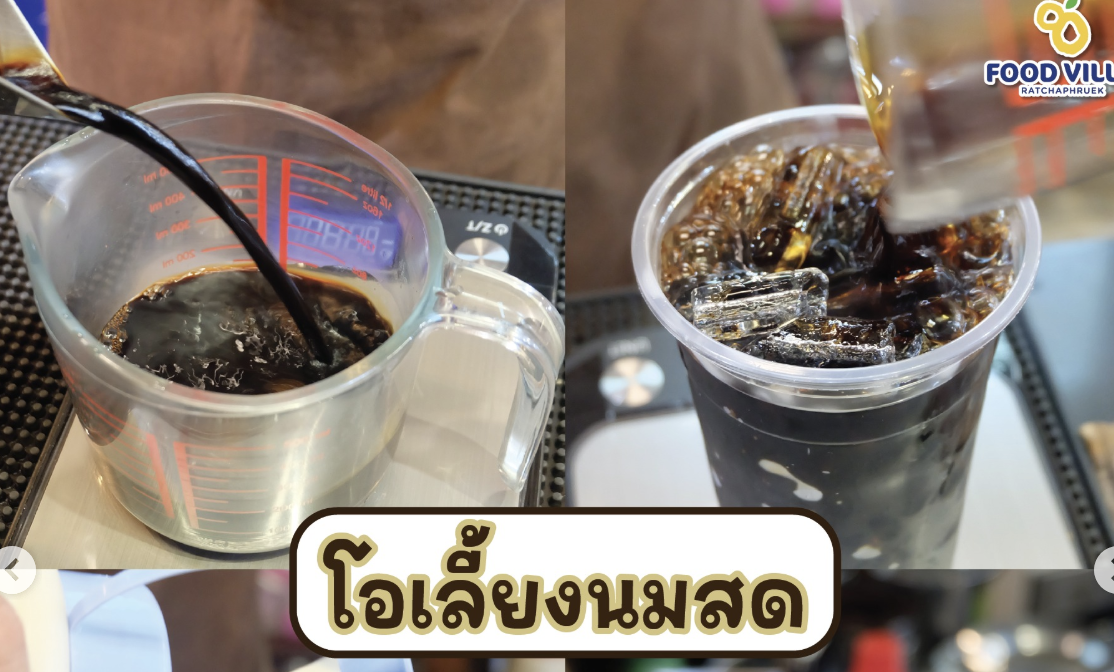

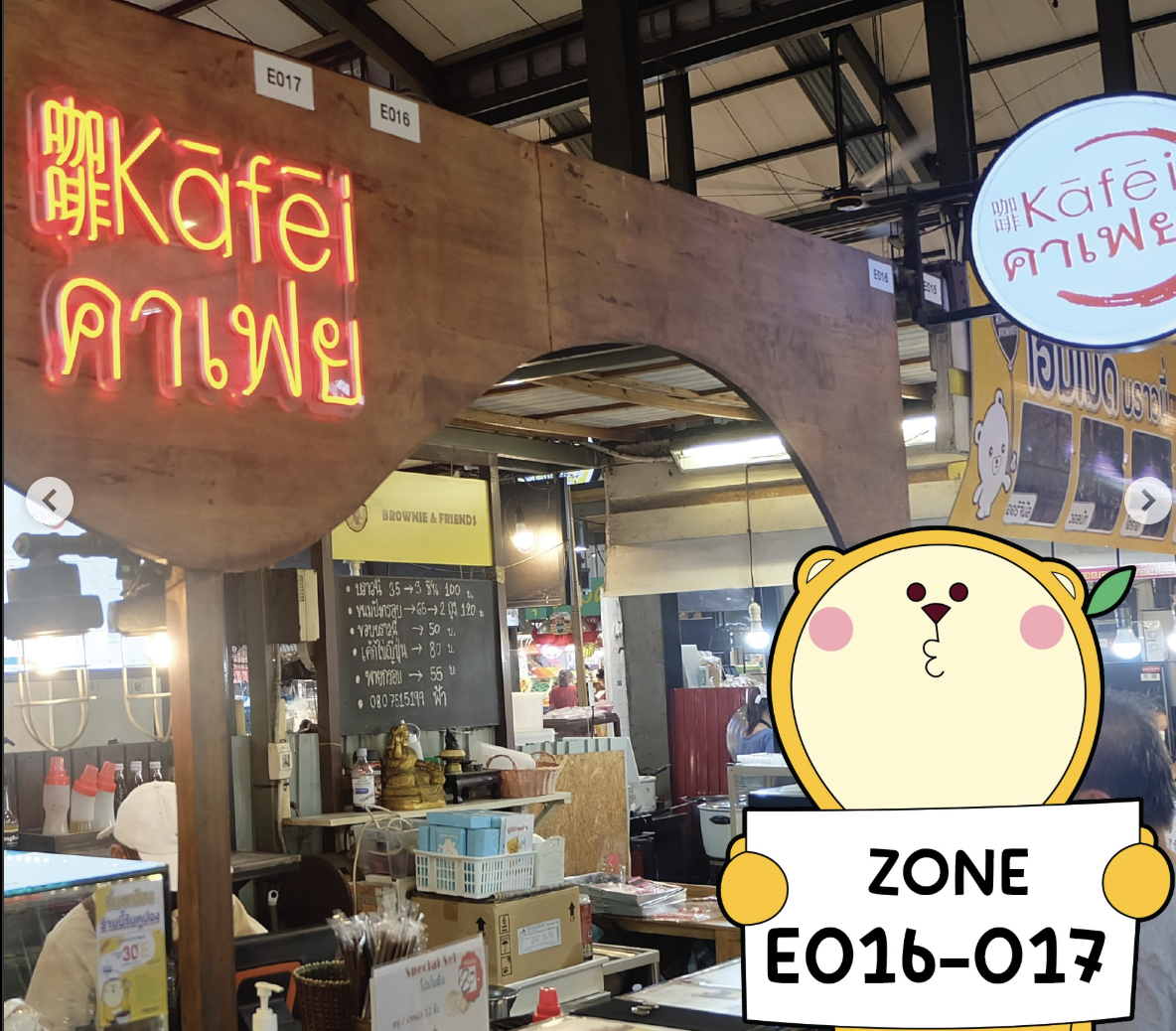
Food Villa Ratchaphruek isn’t just a market; it’s a community hub that captures the essence of Bangkok’s evolving food scene. It’s where tradition meets modernity, where you can savor authentic Thai flavors in a clean, accessible setting. Unlike the more tourist-heavy markets, this place feels like a hidden gem for locals and in-the-know travelers. The variety of food, affordable prices, and relaxed atmosphere make it a must-visit for anyone looking to experience Bangkok beyond the usual hotspots.
For me, the highlight was the sense of discovery—trying new dishes, chatting with friendly vendors, and soaking in the laid-back vibe. Whether you’re a foodie, a family, or just someone looking for a unique Bangkok experience, Food Villa Ratchaphruek delivers. I’m already looking forward to my next visit, maybe to try that spicy duck larb I saw on my last trip. If you’re in Bangkok, make the trip—you won’t be disappointed.










